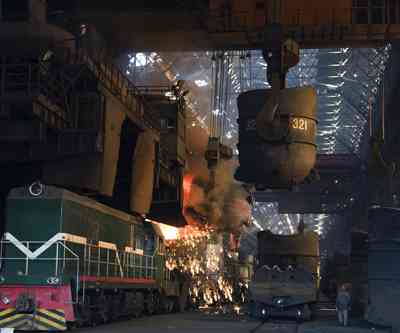
The price of iron ore dropped for the tenth session in a row on Monday as investors shift focus to fundamentals after a stimulus package from top consumer China announced last week did little to improve prospects for the industry.
On Monday the benchmark 62% Fe import price including freight and insurance at the Chinese port of Tianjin declined slightly to $50.90 a tonne, the lowest in three months and down 9% in two weeks according to data provided by The SteelIndex. In July, the steelmaking raw material on a spot price basis, fell to a record low of $44.10.
Iron ore miners have had to cope with a surge in supply from the likes of Vale, BHP Billiton, Rio Tinto and others just as demand from Chinese steelmakers, which import nearly three-quarters of seaborne ore, starts contracting. Just to make life more difficult outside iron ore’s top tier, miners are facing another threat.
A month ago a research report by Singapore’s Minerals Value Service showed the price to a Chinese coastal mill of producing one tonne of pig iron (including cost and freight of all iron ores, coking coals, sintering and pelletizing costs) had for the first time fallen below scrap priced inside the country.
Scrap supply has not in the past played much of a role in the industry, especially when compared to places like Europe where steelmakers have been known to charge up to 18% scrap to furnaces according to MVS.
That may start to change more rapidly. On Friday ferrous scrap prices in eastern China continued to slide hitting $183 a tonne, the lowest since at least March 2005, when Platts first started tracking domestic scrap prices (heavy melting scrap 6mm and above thick, including 17% value-added tax, delivered to Zhangjiagang, Jiangsu province).
It’s striking that Chinese scrap – typically around 90% Fe – now trades for less than 62% iron ore at its 2011 peak.
SEE ALSO: Iron ore miners have new price competition: Chinese scrap
3 Comments
Altaf
This is an enviable position for China to be in. I don’t know how it works but if scrap quotes below pig iron price, this takes out the need to have blast furnace all together.
Scrap can directly be fed into EOF furnace or re-rolling mills. It reduces the need to have blast furnace, iron ore, coking coal, manganese, calcining material, power plant for blast furnace.
One ton of scrap replaces a complete logistic of 1.5 tons of blast furnace.
Imagine the savings for China. Too bad if they are feeding scrap to blast furnace.
nick kelly
It would be a great position for China if the cause of the drop in price was not the collapse in Chinese and world demand for steel.
The Chinese steel industry would MUCH rather pay the iron ore price of two years ago if only they could get the price for steel of two years ago.
It is also worth noting that each few dollars drop in iron ore, while huge for the iron ore producer, is of less and less significance to the steel producer. The other inputs haven’t dropped anywhere near as much, so the price of the ore is a smaller part of the whole.
The industry has so much excess capacity, many steel mills would not be profitable if they were given the ore.
Altaf
@ Nick,
You have a valid point there. Ore price crash and Steel price crash go in tandem.
But only iron ore did not crash. With thermal coal price crash, power cost also fell, and all input costs also at the lowest point of the cycle. So for the mills the crashes are price neutral (or may be a slight loss)
But for China, it is still an advantage. With lower steel prices, it is again taking out high cost steel mills internationally.
Just like the big three iron ore producers are pushing out small miners with low cost ore, China is also taking out high cost mills globally.
So China must be enjoying the situation in following steps :
1. As an importer they are happy for prices of ore going down.
2. Their mills feel a slight pinch and the govt can come to their rescue.
3. With lower cost of steel production, they export more steel, some times taking out competition globally. The market share of Chinese steel goes up.